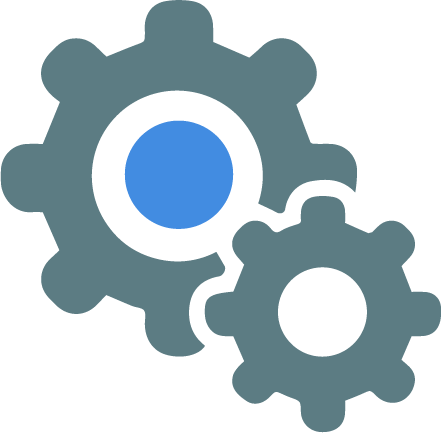Why Benchling's a Gartner "Cool Vendor": 5 Ways to Up-Level Biologics R&D
This year, Benchling was named a "Cool Vendor" in R&D for Manufacturers by Gartner, the leading information technology research and advisory firm. "Cool Vendor" is a distinction given yearly to only a handful of companies that Gartner deems to be innovative and cutting-edge.
With pressure mounting on pharma to deliver new innovations faster than ever before, Benchling's vision for measurable R&D in real-time has never been more pertinent. Traditional R&D informatics has not kept pace with the changing needs of the life sciences industry or the latest technologies disrupting industries across the board.
As Gartner says, “This year's report has a deeper focus into building a ‘Digital R&D’ organization and delivering capabilities for ‘real-time’ access to R&D operational data and an unparalleled level of situational awareness.”
Below are Benchling's five pillars to up-level your R&D organization.

1. Informatics purpose-built for biologics
Over the last two decades, the pharmaceutical industry has seen a clear shift toward biologics as these new classes of biopharma drugs offer the promise of higher therapeutic success. That said, biologics present a unique set of drug discovery and bioprocessing challenges compared to traditional small molecule R&D. Existing informatics platforms, built with small molecule research in mind, hamper not only the day-to-day functioning of R&D teams but also the speed at which life sciences companies are able to bring biologics drugs to market.
Benchling is purpose-built for biologics. This means that all of our modules – Lab Notebook, Molecular Biology Suite, Bioregistry & Sample Tracking, and Workflow & Results Management – model the complexities of large molecule R&D out-of-the-box.
For example, Benchling mimics the way scientists need to run biologics discovery for cell therapy, gene editing, antibody engineering or other therapeutic modalities. When a scientist needs to produce a virus, they typically first make all the individual plasmids and then assemble them in a cell line. Benchling can model not only these individual entities (and their physical batches) but also the stages of this discovery process, which is unique to biologics.

2. The intelligence of a unified data infrastructure
Benchling’s modules are natively and intelligently unified, generating new possibilities for scientists, R&D managers, and executives alike. As a case in point, scientists can now design new constructs and then directly populate them into the bioregistry. This not only saves time and effort, but also improves compliance and captures additional metadata such as lineage. With traditional R&D informatics, this seemingly simple task can take hours and still come up short with respect to the richness of experimental context captured.
Or take the process an R&D organization typically goes through before filing an IND. Just tracing all the biological entities that contributed to the final result can be a long-drawn-out, arduous process. Horror stories recount this taking longer than 1-2 years! With Benchling, this is no longer a separate project in itself as all relevant data is automatically captured and propagated wherever it is relevant. Aggregating data to file an IND becomes a matter of hours, if not minutes.

3. Codeless configuration to keep pace with business changes
The nature and nascency of biologics requires constant adjustment of R&D processes — whether it is experimental inputs, delivery methods, protocols, or conditions — much more so than typically seen in small molecule research. This means your systems need to be flexible enough to keep pace with the speed of experimentation. Legacy informatics is too rigid to allow for such agile reconfiguration. When it takes months to make the simplest changes to configuration, R&D can stall significantly.
Take the case where an antibody engineering company configures its bioregistry for antibodies with IgG formats. What happens when you add bi-specific antibodies as an additional modality and need to track it in the same system? With Benchling, you don't need to call in consultants to customize the system. Since Benchling is built on a model of codeless configuration, scientists and IT can create new schemas and restructure workflows themselves through a point-and-click interface.

4. Open integration for seamless R&D operations
Benchling’s native applications offer comprehensive and novel functionality, but the platform also has modern, completely open APIs. Organizations can integrate existing systems and instrumentation into Benchling, so they can automatically extract data and associate it with relevant experiments.
For example, Benchling's Sample Tracking system can be easily linked to plates, plate readers, and barcode scanners. Scientists can scan the plate barcode to pull information on samples stored in the plate as well as individual wells. Benchling also automatically extracts data from the plate reader and associates it with the individual samples. These plate readings are then associated with prior experimental results on each sample to provide rich historical background. This means less busywork for scientists, less overhead for IT, complete experimental context for group leads, and faster R&D.

5. Organizing, optimizing, and measuring R&D in real-time
Biologics R&D is characterized by numerous specialized teams (often distributed or external), large amounts of complex data, and multiple systems of record. This makes it difficult for a manager or head of science to stay on top of all the research, do the hard analysis, and make the right research decisions to move ahead.
Benchling provides a business process platform for organizations to design and plan R&D workflows, submit requests to support groups, coordinate handoffs between teams, and, for the first time, track comprehensive R&D progress in real-time.
But that's not all. Because workflows in Benchling are seamlessly tied to experimental inputs, conditions, and results, executives can now make pivotal decisions to optimize R&D. For example, a head of science can look across different drug pipelines to identify which screening method has generated the most drug candidates. Or they can catch systemic patterns of failure in a process such as protein purification by gaining quick visibility into which parameters do not work.
R&D Results, Not Software
Benchling is dedicated to helping organizations solve the challenge — and realize the promise — of biologics R&D. We built Benchling to accommodate the complexity, fluidity, and diversity of modern therapeutic modalities. Through our novel approach to life sciences informatics, our focus is ultimately on delivering R&D results, not software.
Ready to see how Benchling can help transform your R&D operations?